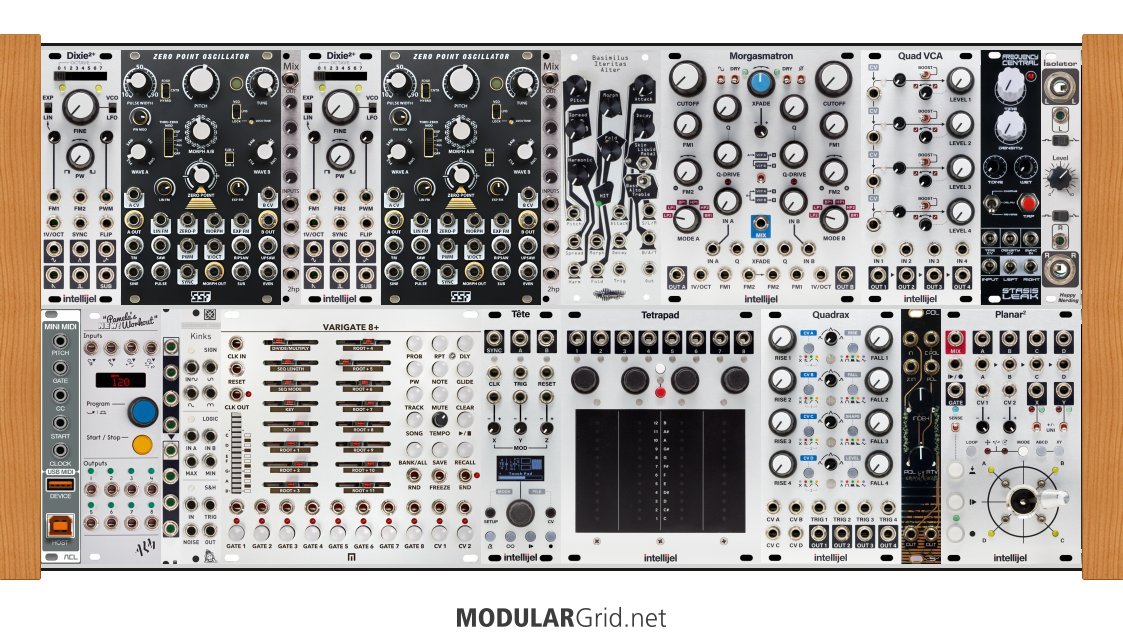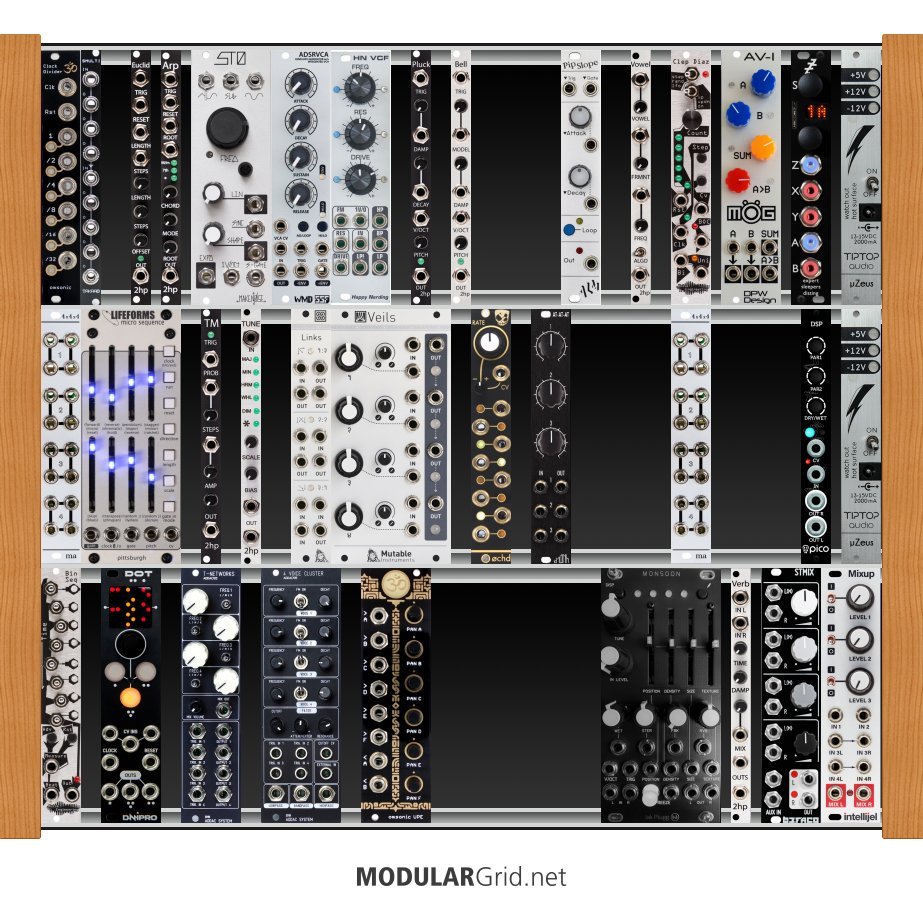Hello,
Just sharing some things I learned this evening. Every week, I try to set aside an evening to experiment with a particular concept or to learn more about something that evades me. Today, it was pinging filters.
For this one, I'm creating rhythmic and musical textures and accents by pinging Make Noise QPAS and Mutable Instruments Ripples with Pamela's NW and Quadrax. I started with a lush ambient landscape and introduce twinkling arps supplied by STO and a Moog Mother 32. Rossum Electro-Music Trident and Plaits provide low and mid drones with a bit of 'zing' resonance from Trident Reverb is managed with Clouds and Mimeophon. To add/remove pings, I used mute switches from Muta Jovis. I have the option to play STO via Keystep keyboard and will do more of that as this track evolves. If I can do this right using resonance, some of the pings are arranged musically and sound like to-scale notes delivered by a sequencer. Clouds helps to round out sharp edges.
Lessons learned:
Lesson 1. Physical mute switches might send a "pop" downstream when toggled. Mimeophon will gobble them up and send a cascade of terrible repeats right to your face because, let's face it, you probably deserved it.
Lesson 2. Master resonance control between Trident and QPAS. Find balance between Trident 'zing' and QPAS 'Q' so that resonance doesn't overwhelm the high end.
Lesson 3. I'm reaching the limits of my mastering skills. Track where the high end is busy are difficult when it comes to removing ambient hiss or just-too-sharp elements. Low end needs more oomph and a cleaner drop off. I've just got to work towards mastering kung fu... mastering mastering kung fu.
Lesson 4. Rossum Electro-Music Trident is beautiful.That's the first word that comes to mind. I was afraid that it would be buzzy or metallic beyond my liking. It can be if told to be so. Otherwise, it's not. It's just so, so good. I'm only scratching the surface of this thing and will dedicate more time to finding out what it can do. I think that's precisely the feeling you want when you introduce any new module, but especially with an oscillator.
Anyhow, hope you enjoy the snippet of noise. I've decided to post each one of these evenings to YouTube so that maybe others can might glean useful bits from my experiments. Any feedback welcomed.
-mowse


